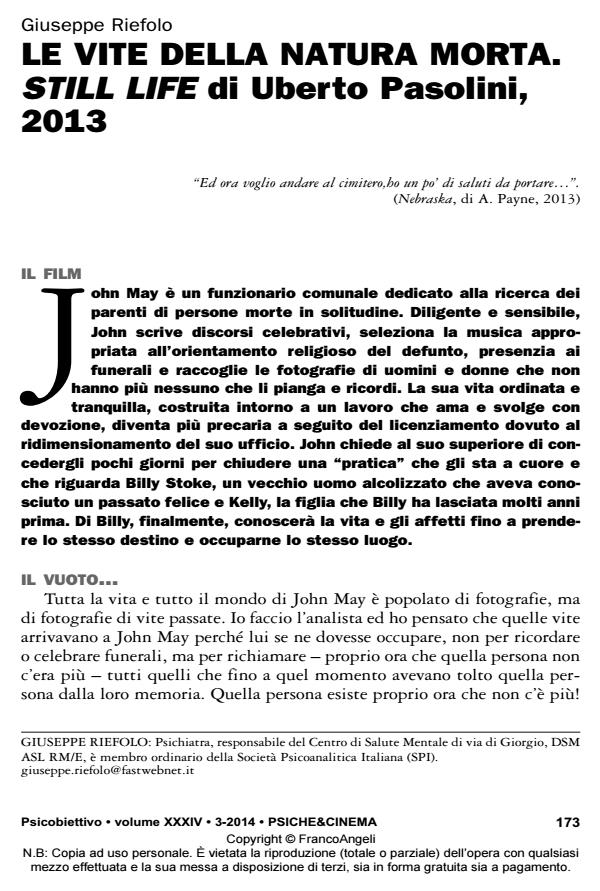The lives of still life
Journal title PSICOBIETTIVO
Author/s Giuseppe Riefolo
Publishing Year 2015 Issue 2014/3
Language Italian Pages 9 P. 173-181 File size 99 KB
DOI 10.3280/PSOB2014-003011
DOI is like a bar code for intellectual property: to have more infomation
click here
Below, you can see the article first page
If you want to buy this article in PDF format, you can do it, following the instructions to buy download credits

FrancoAngeli is member of Publishers International Linking Association, Inc (PILA), a not-for-profit association which run the CrossRef service enabling links to and from online scholarly content.
The therapeutic work, while respecting the pain that patients bring, has the specific task of recovering, continually, traces of life which live with the suffering. It’s about transforming into "absence" what patients bring to us as unsustainable "emptiness". Then, through the intensity of the "relational field", a few frozen frames can develop into richer stories always. Therapists know they are not a collection of patients, but rather they are an intersection of infinite number of stories. Therapists are placed at the intersection point where some stories seem dull or ended up and they can only use their curiosity and passion to go gently into a space apparently empty. The therapists then will not seek traces of a past life, but suspended or potential movements of: photos, records, letters that John May finds in the homes he visit are not important to get information about the case, but let activate again processes during which meeting characters who keep alive and still continue a story seemingly over. Like in every therapy that succeds, life will touch and transform John May.
Keywords: Still Life; Absence; Vacuum; Dissociative Process; Photographs; Cinema; Psychotherapy; Death.
Giuseppe Riefolo, Le vite della natura morta. still life di Uberto Pasolini, 2013 in "PSICOBIETTIVO" 3/2014, pp 173-181, DOI: 10.3280/PSOB2014-003011